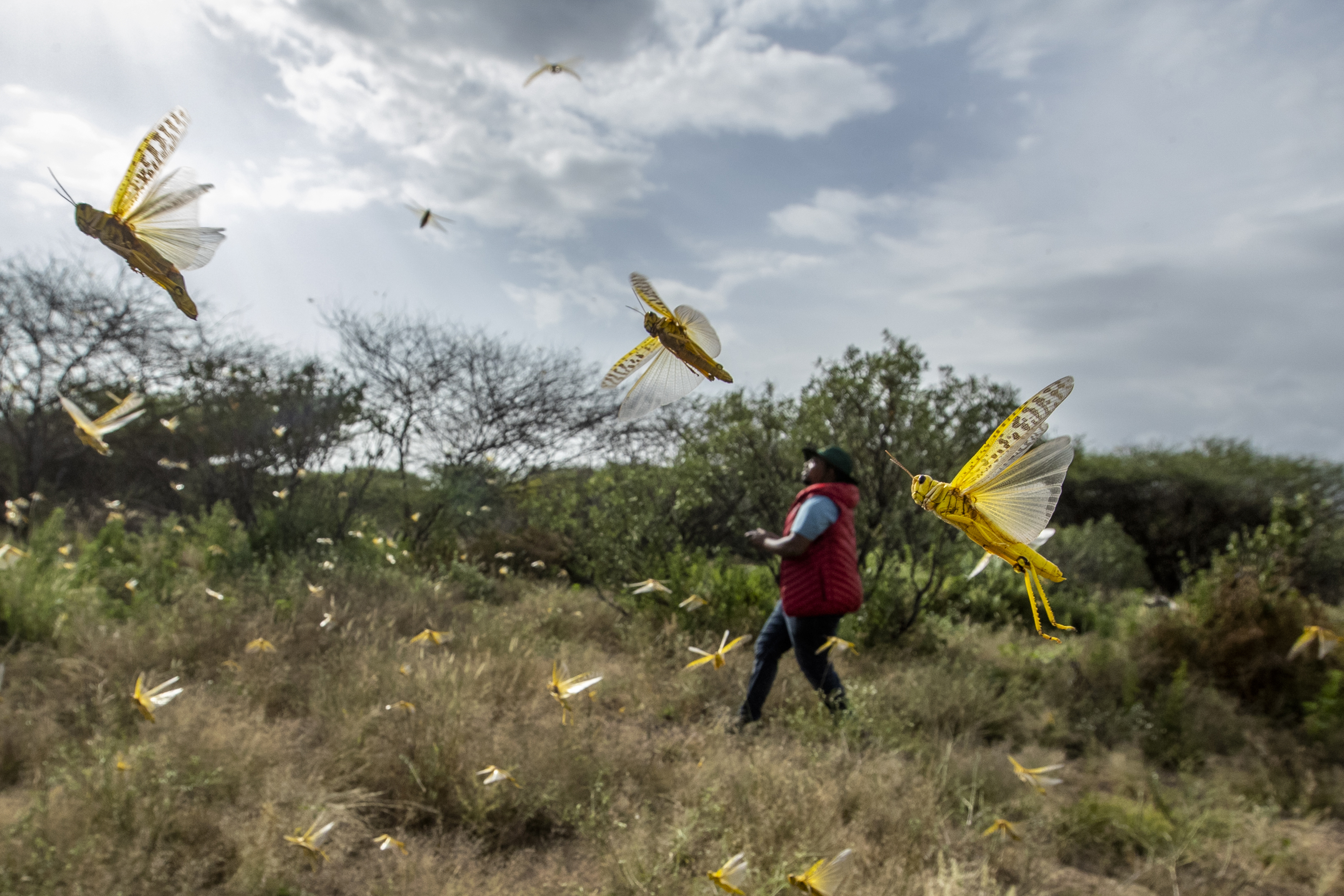
In this photo taken Saturday, Feb. 1, 2020, desert locusts jump up from the ground and fly away as a cameraman walks past, in Nasuulu Conservancy, northern Kenya. As locusts by the billions descend on parts of Kenya in the worst outbreak in 70 years, small planes are flying low over affected areas to spray pesticides in what experts call the only effective control. (AP Photo/Ben Curtis)
A new locust update report released by the United Nations Food and Agriculture Organisation (FAO) shows that Rwanda will not be attacked by the notorious desert locust but other countries especially Kenya.
The first threat of desert locust was reported in February in which the insects destroyed thousands of hectares of plantations in the Eastern and the horn of Africa, but never reached Rwanda.
In March the FAO locust predictions had indicated the locust eggs were hatching from the northern hemisphere towards the East African countries including Rwanda and in second, biggest wave of desert locust would hit these regions in the month of June and July.
However a FAO update on June 20, 2020 shows that except Rwanda, Uganda, Tanzania the locust will attack northwest Kenya (Turkana and Marsabit counties), cross South Sudan, move to east and northern Ethiopia, northern Somalia and migrate across the Indian.
“An increasing number of second-generation immature swarms continue to form in northwest Kenya. The bulk of swarm formation is likely to occur during the next two weeks followed by a decline in July,” FAO reconfirmed in the update.
Apparently, since the February and April locust alerts, Rwanda has been keen on stepping up its preparedness. For instance Rwanda trained agriculture experts and focal points on desert locust survey and control operations, to act as trainers of trainees for farmers in local communities at the villages, cells, sectors and district levels and creating community awareness.
In other countries that could be affected, FAO said that it will depend on the weather conditions.
For example it shows that in Sudan, some rains have fallen so far in South Darfur and South Kordofan, and no locusts are present except for isolated adults in the Nile Valley.
“If the rains are not sufficient, then the invading swarms are likely to continue to eastern Chad and migrate westwards across the Sahel of West Africa. This threat should decline progressively during the next four weeks,” FAO said.
In Ethiopia, control operations continue against hopper bands and new swarms that are forming in the east and northeast. Smaller operations are underway in central and northern Somalia.
In Saudi Arabia, control operations are in progress against hopper bands in the southwest near Najran and adult groups in the Asir Mountains.
In Yemen, hopper bands are present in the interior and highly mobile swarms are moving in highland and southern coastal areas. Some of these swarms are likely to migrate to northern Somalia and northeast Ethiopia.
In Oman, adult groups and a few swarms laid eggs in the Dhofar Hills of the south.
FAO also warned that Sudan, Ethiopia, South Sudan, Pakistan, and India should remain on high alert during the next four weeks while West Africa should continue to take anticipatory measures and preparatory steps.


